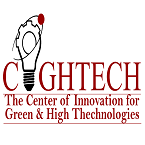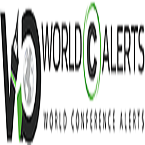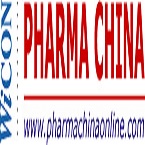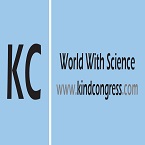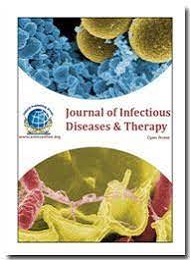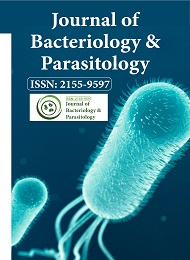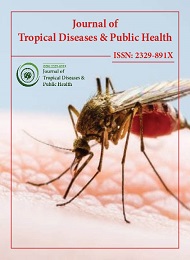
6th International Conference on Emerging Infectious Diseases in Rome, Italy from July 27-28, 2022
6th International Conference on Emerging Infectious Diseases in Rome, Italy from July 27-28, 2022
Theme: The challenge of emerging and re-emerging infectious diseases
Emerging Infectious Diseases 2022
We invite all participants from round the world to participate within the 6th International Conference on Emerging Infectious Diseases in Rome, Italy from July 27-28, 2022. It will be a chance to make a top quality scientific programme for participants from everywhere the planet, as well as sessions, keynote speeches, symposia, workshops, postcards, exhibition and totally different programs. The conference brings together more than 1200 public health professionals from around the world to encourage the exchange of the latest information on issues affecting the emergence, spread, and control of infectious disease.
Emerging Infectious Diseases Conference2022 is an implausible conference, that unites international collaboration between scientists, researchers, consultants from leading universities and provides an ideal platform to widen experiences, promote industry-wide collaboration and assess rising technologies worldwide.
The program includes plenary and panel sessions with invited speakers, oral abstract and poster presentations, and multiple scientific and public health exhibitors—all focusing on emerging and re-emerging infections.
Why to Attend?
Emerging Infectious Diseases Conference2022 is giving a wide-reaching stage to the researchers UN agency are contributory within the field of rising infectious diseases. Communicable disease Conference 2022 provides best platform to expand your network, wherever you'll meet scientists, authorities and CROs from round the world. It’s a show to grab the chance to hitch rising communicable disease conference 2022 for promoting your analysis article and to facilitate prestigious award altogether classes.
Target Audience:
Microbiologists, Bacteriologists, Virologists, Parasitologists, Mycologist, Pathologists, Pharmacists, Epidemiologists, Healthcare professionals, Research students, Laboratory technicians, Diagnostics corporations, Drug producing corporations, Data management corporations, Medical schools, Infectious Diseases Researchers, Doctors.
Track 1: Global climatic change and emerging infectious diseases
In addition to many human, biological, and ecological drivers, climate factors influence the emergence and reemergence of infectious illnesses. Climatologists have seen rising global temperatures and now predict an extraordinary rise of 2.0 degrees Celsius by 2100. These changes have the potential to alter the introduction and spread of many dangerous infectious illnesses, which is a major source of concern. Mosquito-borne diseases, such as malaria, dengue fever, and viral encephalitides, are among the diseases most affected by climate change. Climate change would have a direct impact on disease transmission by altering the vector's geographic range, increasing reproduction and biting rates, and decreasing the incubation period of the virus. Increases in sea surface temperature and sea level caused by climate change can lead to a rise in the occurrence of water-borne infectious and toxin-related disorders, including as cholera & shellfish poisoning.
Track 2: Dental diseases & Infections
Poor dental health has been associated to cardiovascular disease, poor glycemic control in diabetics, low birth weight pre-term babies, and a variety of other illnesses, including rheumatoid arthritis and osteoporosis, according to several epidemiological studies. Oral infections are also a concern for people with a variety of chronic illnesses, such as cancer and HIV infection, as well as those with ventilator-associated pneumonia.
Track 3: Changing patterns of infectious diseases
Emerging infectious diseases and their basic causes gift a threat to the steadiness of countries and so the globe. Reasons for the emergence/reemergence of infectious diseases square measure advanced and interconnected. Specific factors causative the emergence of a malady will typically be known. These embody ecological, environmental or demographic factors that place individuals in enhanced contact with the natural host for a antecedently unacquainted with animal disease agent or that promote the unfold of the infectious agent. These factors are getting more and more current, suggesting that infections can still emerge and possibly increase. Infectious illness emergence and reemergence are complicated and interconnected events. The global community offers worldwide economic and social benefits, but it also allows illness to arise and spread. Although microorganism traits such as genetic adaptation alterations have a role in the genesis of infectious illnesses, human-controlled factors also play a role. Behavioral and lifestyle decisions have a big impact on the emergence and spread of many EIDs, thus they need to be addressed. The factors that contribute to the emergence and reemergence of infectious illnesses are examined.
Track 4: Global hotspots and correlates of emerging zoonotic diseases
Animals carry harmful germs like viruses, bacterial, parasites, and fungi that can sometimes spread to people and cause diseases. These are called as zoonotic diseases or zoonoses. The disease caused by these germs can cause variety of infections, ranging from mild symptoms to serious illnesses and sometimes even death. A healthy looking animal also carries germs that make a person sick, depending on the zoonotic disease. Zoonotic infections can be transmitted from domestic, agricultural, or wild animals to people through any point of contact. Due to the vast number of new or unreported infections known to occur in some wild animal populations, markets selling wild animal meat or by-products are particularly vulnerable. Agricultural workers in locations where antibiotics are widely used for farm animals may be at greater risk of infections resistant to currently available antibiotics. Animals such as rats, foxes, and raccoons can infect people who live in wilderness regions or in semi-urban areas with a high concentration of wild animals. By increasing contact between humans and wild animals, urbanisation and the degradation of natural habitats raise the danger of zoonotic illnesses.
Track 5: Vector-borne diseases: New Approaches to Control Vector from disease transmission
Vector-borne diseases are human diseases caused by parasites, viruses and bacterium that square measure transmitted by vectors. Each year there square measure quite 700,000 deaths from diseases like protozoal infection, dengue, infection, human African trypanosomiasis, leishmaniosis, Chagas illness, infectious disease, Japanese phrenitis and river blindness.
The burden of those diseases is highest in tropical and semitropic areas, and that they disproportionately have an effect on the poorest populations. Since 2014, major outbreaks of dengue fever, malaria, chikungunya, infectious disease and Zika have afflicted populations, claimed lives, and overcome health systems in several countries. Other diseases like Chikungunya, leishmaniosis and humour disease cause chronic suffering, life-long morbidity, incapacity and occasional stigmatization. Distribution of vector-borne diseases is set by a fancy set of demographic, environmental and social factors.
Track 6: Air, Water & Food borne diseases and the responsible agents
Airborne disease can spread when people with some infections cough, sneeze, or talk, spewing nasal and throat secretions into the air. When one breathes in, the airborne pathogenic organisms enter into the host organism. One can also catch germs while touching a contaminated surface and then their own eyes, nose, or mouth. As these pathogenic organisms travel in the air, they’re difficult to control. Some examples of airborne diseases are Covid-19, chickenpox, measles, etc.
Water borne diseases is transmitted through ingestion of contaminated or polluted water. Many infections may be spread by microbes or parasites that by mistake, probably as an effect of exceptional conditions, have contacted the water. However, the fact that there might be a random infection does not mean that it is fair to classify the resulting disease as waterborne disease. Some of the waterborne diseases include Diarrhea, Typhoid, cholera, etc.
Food borne diseases are caused by contamination of food that can occur at any point of the food production, its delivery and during its consumption. This will result from many sorts of environmental contamination as well as pollution present in water, soil or air. Foodborne diseases often lead to duct problems. Some of the common foodborne diseases are caused by Norovirus, Salmonella, Escherichia coli.
Track 7: Nosocomial infections and their control strategies
Nosocomial infections, also named as healthcare-associated or sometimes hospital acquired infections, are a subgroup of infectious diseases acquired in a health-care facility. These infections often lead to serious complications like sepsis and even death. These infections are usually caused by multidrug-resistant strains of pathogens acquired due to improper and excessive use of antibiotics and not following infection control and prevention measures. Bacteria, Fungi and Viruses can cause such type of infection. Most common organism is Staphylococcus aureus bacterium. Examples include urinary tract infection; surgical site wound infections, respiratory pneumonia, and many more. Nosocomial pathogenic agents are transmitted from one person to another, environment or through contaminated food and water, contaminated skin of healthcare personnel or via shared items and surfaces.
Track 8: Perspectives on gastrointestinal infections
Gastrointestinal infections are infective agent, microorganism or parasitic infections that cause intestinal flu.. Symptoms embody diarrhea, vomiting, and abdominal pain. Dehydration is that the main danger of GI infections, thus rehydration is vital, however most GI infections area unit end and resolve among many days. However, in an exceedingly aid setting and in specific populations (newborns/infants, immunocompromised patients or older populations), they're probably serious. fast diagnosing, applicable treatment and infection management measures area unit so notably vital in these contexts.
Campylobacter is one in every of the foremost common microorganism reason behind intestinal flu worldwide and is frequent in kids beneath 2. It will cause diarrhea (sometimes bloody), abdominal cramps, reflex and fever. It's sometimes food-borne through raw or undercooked meat (especially poultry) or through contaminated milk.
Track 9: A prospective study of dermatological infections
Skin infections are caused by a large sort of germs, and symptoms will vary from delicate to serious. Delicate infections could also be treatable with over-the-counter medications and residential remedies, whereas alternative infections might need medical attention. There four differing types of skin infections:
- Bacterial skin infections
Bacterial skin infections usually begin as tiny, red bumps that slowly increase in size. Some microorganism infections area unit delicate and simply treated with topical antibiotics, however alternative infections need associate degree oral antibiotic. Different types of microorganism skin infections include: impetigo & boils.
- Viral skin infections
Viral skin infections area unit caused by a deadly disease. These infections vary from delicate to severe. Different types of infective agent infections include: shingles (herpes zoster) & varicella
- Fungal skin infections
These sorts of skin infections area unit caused by a plant and area unit possibly to develop in damp areas of the body, like the feet or bodily cavity. Some fungous infections aren’t contagious, and these infections area unit usually non-life-threatening. Different types of fungus infections: athlete’s foot &yeast infection
- Parasitic skin infection
These sorts of skin infections area unit caused by a parasite. These infections will unfold on the far side the skin to the blood and organs. A parasitic infection isn’t dangerous however are often uncomfortable. Different types of parasitic skin infections include: lice & scrabies.
Track 10: SARS and MERS: recent insights into emerging coronaviruses
Severe acute respiratory syndrome (SARS) may be a infective agent respiratory illness caused by a SARS-associated coronavirus. Severe acute respiratory syndrome may also be unfold indirectly via surfaces that are touched by somebody United Nations agency is infected with the virus. The period of time of severe acute respiratory syndrome is typically 2-7 days however could also be as long as ten days.
Middle East respiratory syndrome (MERS) may be a infective agent respiratory illness caused by a unique coronavirus) that was 1st known in Asian nation in 2012. Coronaviruses square measure an oversized family of viruses that may cause diseases starting from the respiratory disease to Severe Acute metabolic process Syndrome (SARS). Typical MERS symptoms embrace fever, cough and shortness of breath. Respiratory disease is common, however not invariably gift. Duct symptoms, as well as symptom, have conjointly been according.
Track 11: The Science of SARS-CoV-2
Coronaviruses (CoVs) are an enveloped positive-sense single-stranded RNA virus family with a wide range of species. They infect humans, other mammals, and birds, as well as livestock and companion animals, and are thus not just a public health issue but also a veterinary and economic one. Coronaviridae is a family that belongs to the Nidovirales order and the Coronavirineae suborder. Alphacoronavirus, betacoronavirus, gammacoronavirus, and deltacoronavirus are all members of the Orthocoronavirinae subfamily, which includes four genera: alphacoronavirus, betacoronavirus, gammacoronavirus, and deltacoronavirus. Unlike alphacoronaviruses and betacoronaviruses, which only infect mammals, gammacoronaviruses and deltacoronaviruses infect a larger range of animals, including birds.
Track 12: Multidrug-resistant pathogens: mechanisms of resistance and epidemiology
The resistance among numerous microorganism species (infectious agents) to totally different antimicrobial medicine has emerged as a reason for public health threat everywhere the planet at a terrific rate. Because of the pacing advent of recent resistance mechanisms and reduce in potency of treating common infectious diseases, it ends up in failure of microorganism response to straightforward treatment, resulting in prolonged unwellness, higher expenditures for health care, associated an vast risk of death. The majority the capable infecting agents (e.g., bacteria, fungi, virus, and parasite) have used high levels of multidrug resistance (MDR) with increased morbidity and mortality; therefore, they're observed as “super bugs”.
Track 13: Human Monkeypox: an emerging zoonosis
Human monkeypox is a rare viral zoonosis that is native to Central and Western Africa but has lately spread to the United States. Although the monkeypox virus's natural animal reservoir is unknown, rodents are the most likely cause of its introduction into the United States. Since the eradication of smallpox in the 1970s, monkeypox has become the most common orthopoxvirus infection in humans. Human monkeypox currently lacks a recognised cure, and concerns about its potential as a bioterrorism agent linger.
Track 14: Innovative approaches in diagnosis of emerging/re-emerging infectious diseases
Molecular diagnostics continues to evolve terribly quickly, and its impact within the designation of infectious diseases is plain. Molecular tools have a crucial role in discovering and characterizing many rising infectious agents and have currently become the gold commonplace for the designation of infectious diseases caused by fastidious or uncultivated agents. Multiple challenges still stay for the widespread use of efficient, validated, and commercially accessible molecular tools. Machine-controlled instruments capable of sample process and multiplex macromolecule amplification and post amplification analysis have already been approved by the North American nation Food and Drug Administration (FDA) to be used within the clinical setting. Nanobiotechnology is commencing to impact laboratory medical specialty within the clinical setting.
Track 15: Preventive measures to control spread of Diseases
The infectious diseases could also be prevented in one in all two general ways: (1) by preventing contact, and so transmission of infection, between the prone host and also the supply of infection and (2) by rendering the host unsusceptible , either by selective breeding or by induction of a good artificial immunity. The character of the particular preventive measures, and their effectiveness, varies from one illness to a different.
Track 16: Vaccinology & Epidemiology
Vaccines are biological measures that improve immunity for a particular disease, are an important part of disease prevention and one of the most economical investments in health and economic development. Vaccination can prevent the suffering and death linked with infectious diseases like polio, measles, and pneumonia.
Literature reveals that about 60% of all human infectious diseases known till now, and approximately 75% of the emerging diseases that have affected people over the last three decades had a zoonotic characteristic. Scientific research conducted indicates that some areas of the world are likely to experience the emergence of new infectious diseases.
Summary
The Two-day international conference will offer practical evidence-based approaches for assembling your workforce and decreasing the spread of active health infections. The aim of Emerging Infectious Diseases Conference 2022 is to encourage the health perspective, including sessions, round tables, symposiums, synopses, and workshops on emerging infectious diseases. The objective is to bring together a multidisciplinary group to categorize key disease concerns in Europe, the USA and Asia-Pacific, the Middle East and anywhere else in the world. Participants will be scientists, Infectious Diseases Researchers, doctors, clinicians, nurses, patients, government executives and drug company representatives. This summary grants the conference's recommendations. It consists of measures proposed to participate in the conference by the plenary speakers, the lecturers and the students.\The worldwide infectious disease diagnostics market size is projected to range USD 39.8 billion by 2026 from USD 28.1 billion in 2021, at a CAGR of 7.2%. The market growth is driven by the global incidence of infectious diseases & onset of COVID-19 and the growing awareness for early disease diagnosis, shift in focus from centralized laboratories to decentralized POC testing and growing technological developments.
Importance and Scope
An emerging meeting on infectious diseases combines various practises that correctly limit the infection spread. The knowledge is essential in all healthcare environments to avoid the spread of transmissible diseases. The conference's idea requires a basic knowledge of disease epidemiology; the significance of prevention measures and bundles during the renewal of hospitals to safeguard the patients from infections that are related to the environment. The operation of the infection-control programme, in healthcare facilities, is also important for health care administrators.
This is a main problem for patient safety and can also be a problem for professional health and safety. A well-operational awareness programme reduces the risk of patients. The role of every health worker in public health practise must be understood, incorporated into daily actions and shared between others.
Members Associated with Emerging Infectious Diseases Research
The aim of the Healthcare initiative conference EMERGING INFECTIOUS DISEASE 2022 is to help in reducing the spread of health care-related infections, assess, plan, implement and evaluate national infection control policies. The ultimate target is to encourage quality health care, which is safe in the field of Infectious Diseases, for patients, health workers and others working in the health sector.
Major Infectious Diseases Research Associations Worldwide:
Johns Hopkins University, United States | British Infection Association | Infectious Disease Society of America | Infectious Diseases Research Network | European Society for Clinical Microbiology and Infectious Diseases | British Society for Antimicrobial Chemotherapy | British HIV Association | The Hospital Infection Society | Health Protection Scotland | The Society of Health care Epidemiology of America | King's College London, UK | Kumamoto University, Japan | Linnaeus University, Sweden, | Pfizer, USA
Market Research on Emerging Diseases:
The global market size for infectious diseases is anticipated to extend at CAGR of half dozen.6 % throughout the projected year by USD forty six.88 billion in 2019. The expansion of this market can doubtless be driven by increasing prevalence of infectious diseases, increasing prices to spice up the penetration rate of treatment of these diseases, growing awareness initiatives on treatments and medical specialty, and increasing clinical trials for the event of recent medication. In 2018, 45.9% of the market within the HIV phase was within the highest proportion.
According to a brand new research report “Infectious illness medical specialty Market by Product and resolution (Consumables, System, software package and Services), Technology (Immunodiagnostics, PCR, INAAT), illness (HIV, HAIS, Influenza), user (Hospital, Reference workplace, Research) - world Forecast to 2027”, written by Meticulous Research®, the communicable disease medical specialty market is calculable to lift at a CAGR of half dozen.9% from 2020 to the touch $42.85 billion by 2027.
COVID-19 Impact on the Infectious Disease Diagnostics Market
The increasing demand for diagnostic products for infectious diseases and HAIs round the globe has magnified. In many countries everywhere around the globe, the recent natural event of COVID-19 has crystal rectifier to destruction. The unwellness has unfold too several countries round the world since its natural event in November 2019. In response to the magnified COVID-19 pandemic and also the lack of molecular testing capability and reagents during a laboratory, many designation check makers have designed and began to sell fast and easy-to-use testing devices. These easy check kits area unit either supported the detection in metastasis samples of COVID-19 proteins (sputum and throat swab). This pandemic thus creates opportunities for numerous sellers in operation during this market in increasing production & approval of COVID-19 kits.
Scope of the Report:
Infectious Disease Diagnostics Market by Product & Solution;
- Consumables
- Instruments
- Software & Services
Infectious Disease Diagnostics Market by Technologies;
- Immunodiagnostics
- Clinical Microbiology
- Polymerase Chain Reaction
- Isothermal Nucleic Acid Amplification Technology
- DNA Sequencing and Next-Generation Sequencing (NGS)
- DNA Microarray Technology
Infectious Disease Diagnostics Market by Disease;
- Human Immunodeficiency Virus (HIV)
- Hospital-Acquired Infections (HAIS)
- Hepatitis
- Human Papillomavirus (HPV)
- Tuberculosis (TB)
- Influenza
- Other diseases like measles, small pox, mumps, typhoid fever, malaria, meningitis, Ebola virus disease, Lyme disease, coronavirus disease, and whooping cough.
Infectious Disease Diagnostics Market by End User
- Hospital/Clinical Laboratories
- Reference Laboratories
- Academics/Research Institutes
- Other end users comprise of physician offices, nursing facilities, and home healthcare agencies
Infectious Disease Diagnostics Market by Geography
Europe, Germany, France, Italy, Spain, Japan, China, India, Asia-Pacific (APAC), Latin America, North America, Middle East & Africa
Sensing the raising importance of Infectious Diseases prevention, control, treatment and cure, Conference Series hosted 5th International Conference on Emerging Infectious Diseases 2021, in Amsterdam, Netherlands on 27 to 28th of August, 2021. The conference was successful in gathering eminent speakers from different reputed universities and organizations and their paramount speech enlightened the gathering. This pragmatic meeting organized by Conference Series received generous response from the Editorial Board Members of Conference Series.
Journals also as experience from domain, proficient researchers and young student community. Researchers and students United Nations agency attended from totally different components of the planet created the conference one in every of the foremost victorious and productive events in 2017 from Conference Series. The conference was marked with the presence of celebrated Speakers, Young Researchers, Students and Business Delegates driving the equestrian sport into the trail of success with thought agitating keynote and comprehensive displays.
The conference successfully covered the following scientific tracks and discussions:
- Updates on Emerging Infectious Diseases.
- Gastrointestinal, Nosocomial and Dermatological infections.
- Vector borne and Zoonotic diseases.
- Water borne and Food borne diseases
- Antimicrobial Drug Resistance
- Pharmacology and Plant pathology
- Bioterrorism
- Infectious diseases in mother and child
- Ecology & Evolution of Infectious diseases
- Molecular Diagnostic techniques
- Detailed discussion on Covid-19 & its epidemiology
- Advancements in Vaccines & Therapeutics.
The honoured guests, keynote speakers, well-known researchers and delegates shared their advanced research and vast knowledge through their fabulous presentations at the platform of grand Emerging Infectious Diseases2021.
We are also grateful to all the delegate experts, company representatives and other renowned personalities who supported the conference by assisting active discussion mediums. We candidly thank the Organizing Committee Members for their kind presence, support and help. With the unique feedback from the event, we would like to announce the commencement of the “6th International Conference on Emerging Infectious Diseases” to be held during July 27-28, 2022 | Rome, Italy.
Conference Highlights
- Global climatic change and emerging infectious diseases
- Changing patterns of infectious diseases
- Dental diseases & infections
- Vector-borne diseases : New Approaches to Control Vector from disease transmission
- Global hotspots and correlates of emerging zoonotic diseases
- Air, Water & Food borne diseases and the responsible agents
- Nosocomial infections and their control strategies
- Perspectives on gastrointestinal infections
- A prospective study of dermatological infections
- SARS and MERS: recent insights into emerging coronaviruses
- Multidrug-resistant pathogens: mechanisms of resistance and epidemiology
- Human Monkeypox: an emerging zoonosis
- Innovative approaches in diagnosis of emerging/re-emerging infectious diseases
- Preventive measures to control spread of Diseases
- Vaccinology & Epidemiology
- The Science of SARS-CoV-2
- Cancer Immunology & Immunodiagnosis
To share your views and research, please click here to register for the Conference.
To Collaborate Scientific Professionals around the World
| Conference Date | July 27-28, 2022 | ||
| Sponsors & Exhibitors |
|
||
| Speaker Opportunity Closed | |||
| Poster Opportunity Closed | Click Here to View | ||
Useful Links
Special Issues
All accepted abstracts will be published in respective Our International Journals.
- Journal of Infectious Diseases & Therapy
- Journal of Bacteriology & Parasitology
- Journal of Tropical Diseases & Public Health
Abstracts will be provided with Digital Object Identifier by











